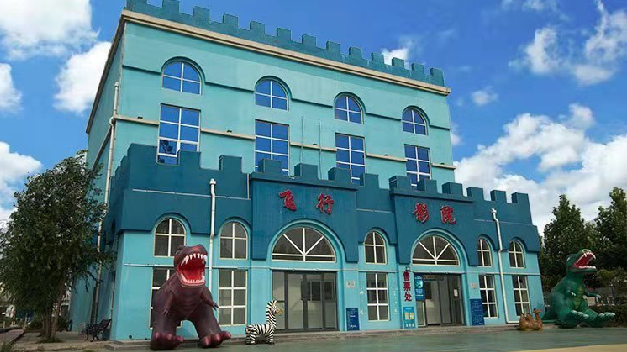- Albanian
- Arabic
- Belarusian
- Bengali
- Czech
- English
- French
- German
- Hebrew
- Hungarian
- Indonesian
- irish
- Italian
- Japanese
- kazakh
- Persian
- Russian
- Thai
- Uzbek
- Vietnamese
roller coaster track design
The Art and Science of Roller Coaster Track Design
Roller coasters have captivated thrill-seekers since their inception, blending engineering prowess with a keen understanding of physics and creativity. The design of roller coaster tracks is a complex process that requires meticulous planning and a passion for both aesthetics and adrenaline. This article delves into the intricacies of roller coaster track design, highlighting the balance between safety, technology, and the sheer joy of riding.
The Foundation Physics and Engineering
At the heart of roller coaster design lies a fundamental understanding of physics. Designers must consider forces such as gravity, inertia, and centripetal acceleration that come into play during a ride. For example, as a coaster car plunges down a steep drop, gravity pulls it downward, while inertia tries to keep it moving forward. A well-designed track harnesses these forces to create exhilarating moments without compromising safety.
Key engineering principles are essential in the track design process. The shape and curvature of the track influence the ride experience. Designers utilize concepts such as parabolas and circular arcs to ensure smooth transitions between elements, minimizing jarring movements that could lead to discomfort or injury. The use of computer-aided design (CAD) software allows engineers to create precise models that visualize the track layout, incorporating spline curves and other geometrical shapes to enhance the ride's flow.
Types of Tracks Variety is the Spice of Life
There are several types of roller coaster tracks, each offering a different experience. Wooden coasters, with their classic charm, provide a rickety, yet thrilling ride that appeals to nostalgia. The inherent flexibility of wood allows for unique design elements, such as banked turns and pops of airtime. However, wooden coasters require careful attention to maintenance, as wear and tear can affect safety and performance.
Steel coasters, on the other hand, have revolutionized the industry since their introduction. Their robust construction allows for steeper drops, inversions, and intricate designs. Advancements in technology have led to innovations such as inverted coasters, launched coasters, and even hybrid models that combine wood and steel elements. Each design presents its own set of challenges, demanding creativity and ingenuity from designers.
roller coaster track design

The Role of Safety A Non-Negotiable Priority
While thrill is the primary goal of roller coasters, safety remains the foremost concern for designers. Each coaster undergoes rigorous testing and must meet strict safety standards before it can open to the public. Designers incorporate various safety mechanisms, such as redundant braking systems, lap bars, and restraints, to ensure passengers are secure during their ride.
Furthermore, designers must consider the forces exerted on riders. G-forces, or gravitational forces, are a critical factor in the design process. Engineers calculate the maximum G-forces that riders will experience during the ride, ensuring they remain within safe limits. Additionally, the smoothness of the ride is crucial; rough transitions or excessive vibrations can lead to discomfort and increase the risk of injury.
Aesthetic Appeal Creating a Thematic Experience
Beyond engineering and safety, aesthetics play a vital role in roller coaster design. A well-designed coaster not only provides thrills but also enhances the overall theme of the amusement park. Designers often create elaborate backstories and visual themes that integrate the coaster within the park's narrative. From vibrant colors to dramatic landscapes, each element contributes to a cohesive experience that engages riders both on and off the track.
Moreover, the layout of the coaster often incorporates features such as tunnels, water elements, and unexpected twists to surprise and delight riders. The integration of lighting and sound effects can further enhance the experience, making each ride unique and memorable.
Conclusion
Roller coaster track design is a fascinating blend of art and science, where creativity meets engineering expertise. As the industry continues to evolve, designers are constantly pushing boundaries, creating innovative coasters that offer thrilling experiences while prioritizing safety. Whether you’re a casual rider or an adrenaline junkie, the intricate design of roller coasters ensures that there’s always something new to explore and enjoy. Each twist, drop, and turn is a testament to the passion and skill of those who bring these exhilarating rides to life, making amusement parks a coveted destination for adventure seekers around the world.
-
Flume Ride-Hebei Zhipao Amusement Equipment Manufacturing Co., Ltd.|Thrilling Water Attraction&Customizable DesignJul.30,2025
-
Flume Ride - Hebei Zhipao Amusement Equipment | Water Coaster, Thrilling DescentJul.30,2025
-
Flume Ride - Hebei Zhipao | Thrilling Water AttractionJul.30,2025
-
Flume Ride: Thrilling Water Attraction by Hebei Zhipao|Log Flume Manufacturers&Flume Ride DesignJul.30,2025
-
Flume Ride-Hebei Zhipao Amusement Equipment Manufacturing Co., Ltd.|Thrilling Water Coaster, Safe DesignJul.30,2025
-
Flume Ride-Hebei Zhipao Amusement Equipment Manufacturing Co., Ltd.|Thrilling Water Attraction, Safe DesignJul.30,2025
